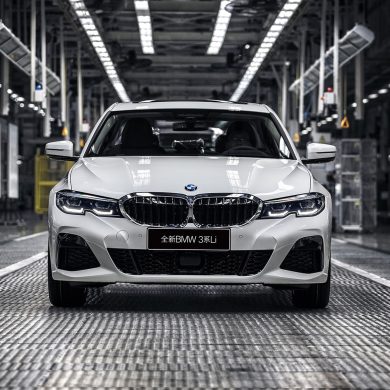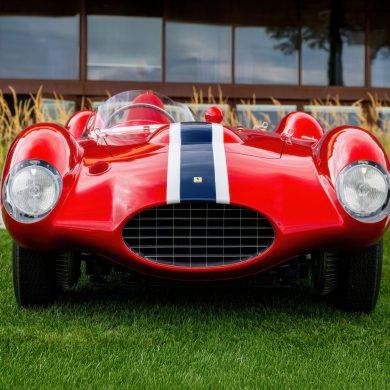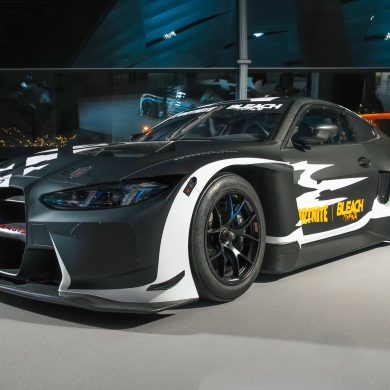By Will Silk

The Bavarian company gained a fair amount of positive publicity for being the engine supplier to Nelson Piquet’s Formula 1 Brabham race car which took the Formula One World Championship in 1983; but the staff in Munich was seeking more than that, something along the lines of yet another “halo” car like the legendary M1 had provided the German auto maker with a few years earlier. It was deemed that the car would be technologically innovative and extremely robust, however one thing was immediately ruled out, and that was the use of a turbocharger; as the higher powers within the company wanted to avoid the use of such a power enhancing component for a number of reasons.
The staff at BMW decided they needed this new car to emerge by 1985, and so Paul Rosche was handed the task of designing a new sporty engine for the small 3-Series car, the 3-Series having been selected to be the platform of choice to move forward on. Rosche was the man behind the 1200+ horsepower BMW Formula 1 engines, but the task of constructing an engine for mass production and prolonged durability is much different than preparing a multi-piston nuclear power plant for the top form of four-wheeled motorsport. The goal was to obtain 200 horsepower reliably, and the torque output needed to be high in order to propel a 3-Series to 60mph in under 7.0 seconds. Rosche immediately set about developing a four-cylinder engine for the task, as the four-cylinder crankshaft could sustain much higher revolutions before crank vibrations started to become a serious issue. The design team for the M3 four-cylinder used their knowledge from F1 and came up with a crank that had substantial torsional rigidity and would be clear to run at an engine speed at or exceeding 10,000 rpm, fully knowing that the factory would redline the production engine at a significantly lower engine speed than what they had designed into the crank assembly. This was not simply German engineering over achieving a set goal, but foresight amongst the designers as many were made completely aware that this new car would more than likely be destined for Group A racing within the FIA Championship Series for Production Cars.
By August of 1985, the automobile press had gotten wind of something new and evocative coming from Munich, and testing was progressing at a good rate while yielding positive results. The exhaust system proved challenging at first, as it was designed to produce power along with clean emissions via a three way catalytic converter, though after some modifications to the sport exhaust at the Nurburgring test sessions, 195bhp was still being reliably produced by the 2.3 liter four cylinder engine with a four valve head. Zero to 62mph came about in 6.9 seconds, and a top speed of 146mph was reported.
With the engine reaching a satisfactory point of development, careful consideration was paid to keeping the weight as low as possible. In the end, the E30 M3 would debut tipping the scales at just over 2,800lbs, delivering a fantastic power-to-weight ratio. The weight savings was accomplished by the use of plastic in the front and rear bumpers, side sills, boot lid and spoilers. The body shell shared little with the contemporary E30 base model, as only the hood and sunroof were carried over to the M3 variant. The body shell itself was constructed of metal in BMW tradition, complete with those ever muscular boxed wheel flares.



The E30 M3 was designed as a road going racer for the most part, so a short 101 inch wheel base was selected, as well as offering three times the caster angle over that of the base E30 3-Series car, which helped the small Bavarian coupe deliver optimum cornering. The E30 M3 also used a number of other parts bin performance solutions to gaining assistance across the performance board. The E28 5 Series car donated wheel bearings and brake assemblies, and a beefier 5-speed manual transmission was utilized as well as a more aggressive final drive ratio in the rear differential.
Production for the new M3 had to be 5,000 units a year in order to meet FIA homologation requirements. The new M3 made its international debut at the 1985 Frankfurt Auto Show and immediately gained world notoriety with its robust and aggressive look, however consumers would have to wait until mid-1986 until the first cars began to reach their local dealerships for delivery. Evolution models would later appear sporting a larger engine of 2.5 liters and 215bhp, though this was achieved with the deletion of the catalytic convertor, therefore these models did not make it to the North American market. Over 700 cabriolets were also built during the initial production run for the E30 M3, all boasting the 215bhp engine option.
The M3 drew first blood in the 1987 World Touring Car Championship with a win by the French duo of Giroix and Jaussaud at the Nogaro round after several podium positions had been obtained by a number of M3 equipped teams in earlier rounds. The winning continued at the Tourist Trophy event, the Spa 24 Hours, Imola, Zeltweg, Anderstorp, Dijon, Estoril, the 4 Hours of Jarama, and the 500 Kilometers of Donington with such notable names as Cecotto, Theys, and Questor taking wins at these historic circuits piloting M3s. The final round for the 1987 World Touring Car Championship was held at Monza, and the majority of the teams equipped with M3s were disqualified from the event for roof metal thickness not being compliant with the regulations. Despite the dismal outcome of the Monza round, the BMW M3 became World Touring Car Champion for 1987.
Today, the M3 continues to ruffle the feathers of those who wish to remain fearful and emotionless. The current line of M3s offers a 4-door sedan, 2-door cabriolet, and the traditional no-nonsense coupe. All come with a beautiful, naturally aspirated, 4.0-liter V8 producing 414bhp at an outrageously high 8,400 rpm. Though time has seen the M3 pack on the weight since the original E30 ceased production in 1992, current M3s weigh in at over 3,700 pounds requiring every bit of that high revving V8’s power to propel the car to four second zero to sixty times. The M3 also continues to be active on the track around the world in all levels of GT racing.
For many automotive enthusiasts, glancing back to the 1980s brings about a cringe, as increased government involvement in the auto industry further diluted the cars that mass production manufacturers were producing. Thankfully, a small team of designers in Munich decided to look these dark forces straight on and spit back in their face by bringing about a small car packed with exceptional performance, the E30 M3. Without this effort, the world would truly be absent an icon in the sporting GT realm.
BMW M3 E30 – Photo Gallery








[Source: photo credit: BMW AG]










It is curious to see that, on tarmac events, the Audi Quattro succumbed in front of the Lancia 037 (especially in 1983) and, likewise, the Lancia Delta 4WD lost the battle against the M3 in 1987. David versus Goliath, repeated…